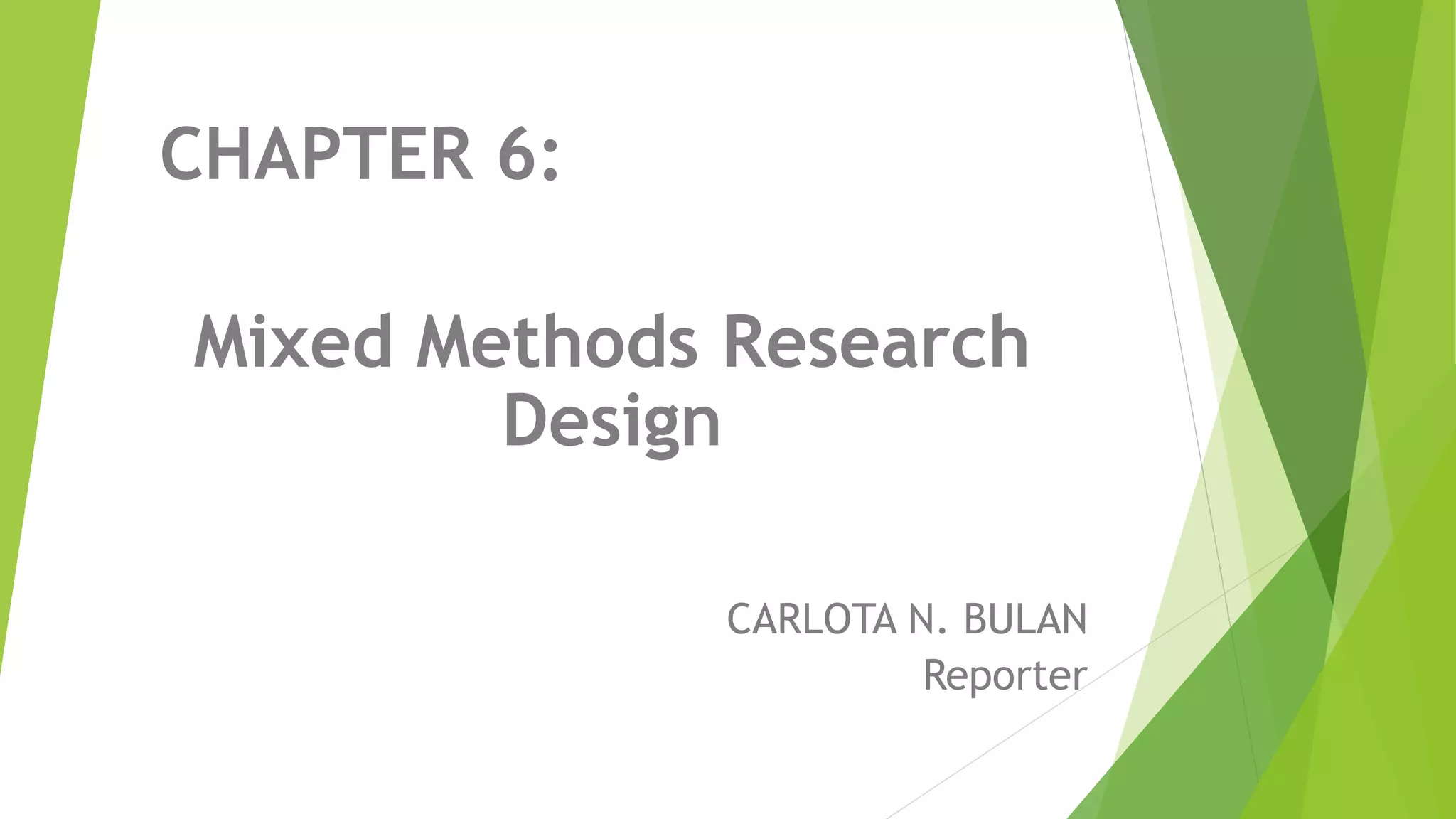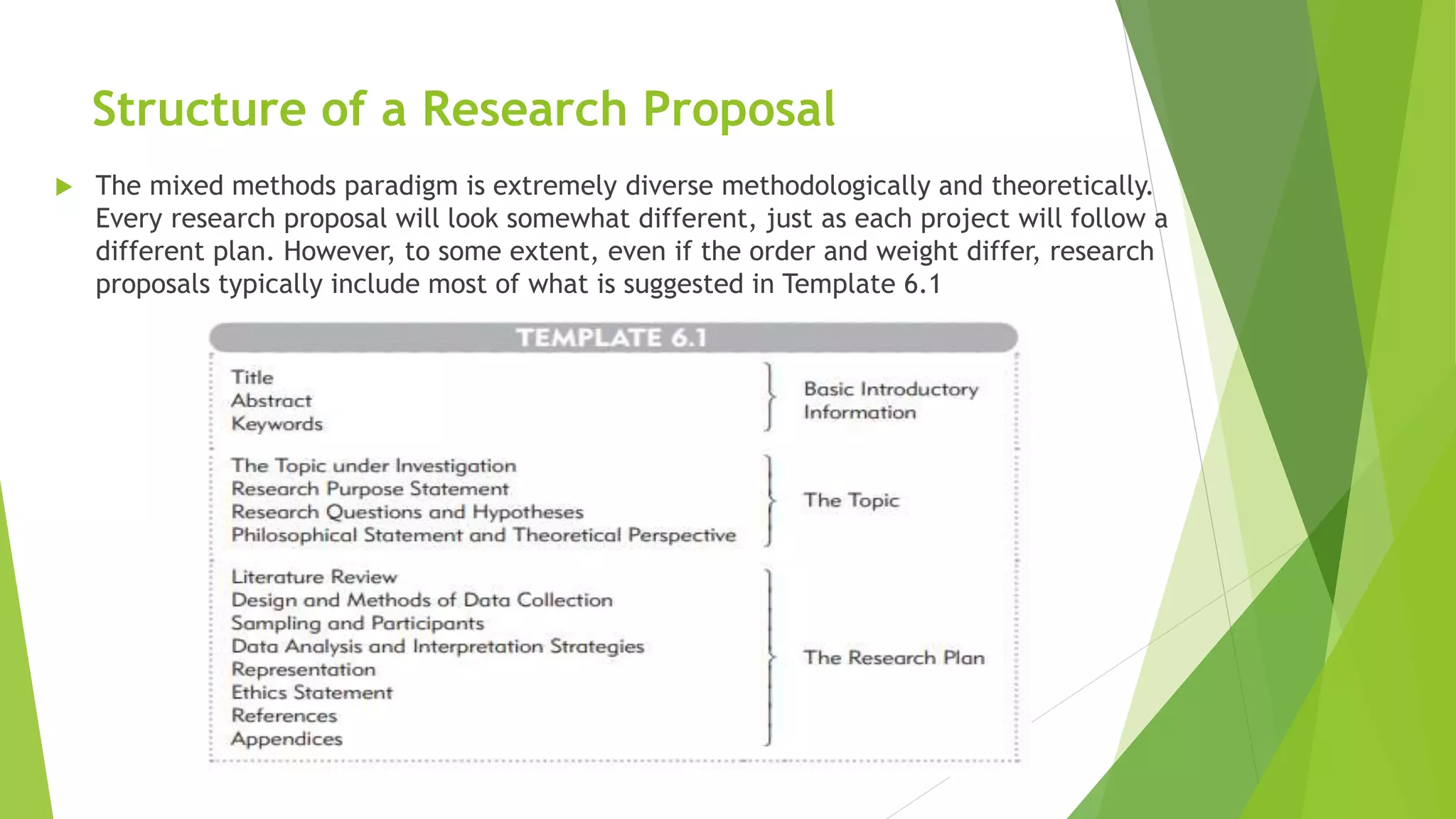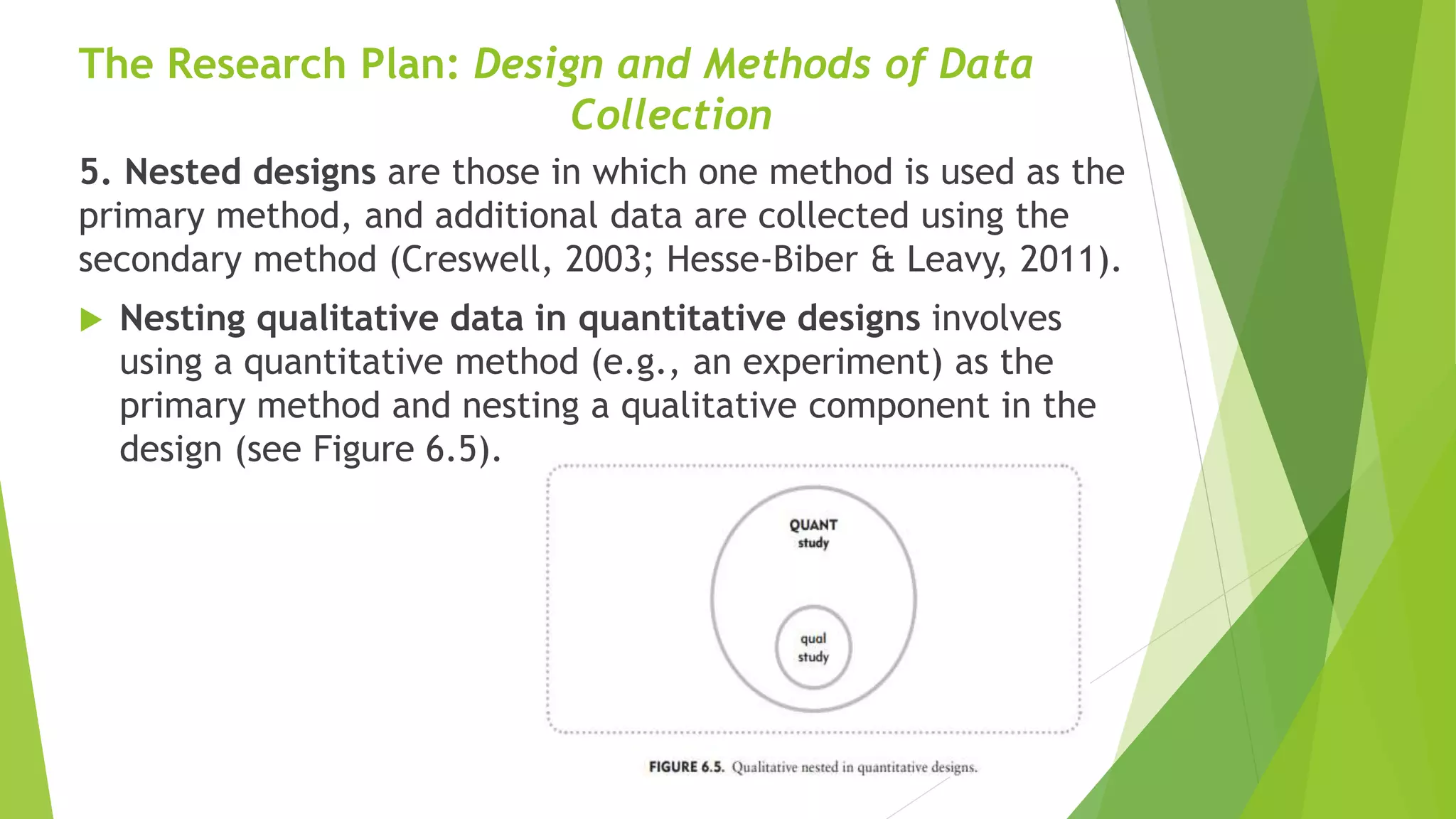This document discusses mixed methods research design. It begins by defining mixed methods research as involving collecting and integrating both quantitative and qualitative data within a single research project to provide a more comprehensive understanding of the phenomenon being studied. It then outlines the typical structure of a mixed methods research proposal, including an introduction with basic information, a section on the research topic, and a research plan section. The research plan section often includes a literature review and details on the specific mixed methods design and data collection methods. The document provides examples of five primary mixed methods designs: sequential explanatory, sequential exploratory, convergent parallel, embedded, and transformative.

































![The Research Plan
Appendices:
Includes your proposed timeline, budget, copies
of your recruitment letters and informed consent,
permissions, and copies of all instruments (e.g.,
pretests, survey instruments [questionnaires],
experimental interventions, measuring
instruments, interview guides, posttests).](https://image.slidesharecdn.com/mixedmethodresearch-230329034439-6d137101/75/mixed-method-research-pptx-34-2048.jpg)

